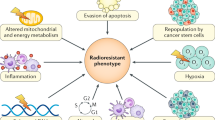Abstract
The effect of oral ubiquinone (Q10) intake on thein vivo response of tumors to single dose radiotherapy was examined. The human small-cell lung cancer (SCLC) line CPH 054A, which is sensitive to relatively low doses of X-radiation, was grown as subcutaneous transplants in the flanks of nude nu/nu mice. When macroscopical growth was established, groups of mice received either 10, 20 or 40 mg/kg Q10 in 30 mL soy oil intragastrically daily on 4 consecutive days. Controls received either 30 mL of pure soy oil or nothing. Three h after the last dose half of the tumors in each group received a single radiation dose of 5 Gy, using a 300 kV therapeutic unit. The macroscopic growth pre- and posttreatment was analyzed according to a transformed Gompertz algorithm using the software program GROWTH. Treatment with Q10 or soy oil alone had no effect on tumor growth compared with untreated controls. Groups of tumors that received Q10 and radiotherapy had a significantly lower specific growth delay (SGD) than the radiotherapy-only groups. This effect was significant at 40 mg/kg and borderline at 20 mg/kg, whereas at 10 mg/kg no radioprotection was seen. We conclude that systemic Q10 reduces the response to single dose tumor irradiation inxenotransplanted human SCLC tumors.
Similar content being viewed by others
References
Adams G.E.: Temporal stages of radiation action: free radical processes, pp. 1–13 in G.G. Steel, G.E. Adams, A. Horwich (Eds):The Biological Basis of Radiotherapy, 2th ed. Elsevier, Amsterdam 1989.
Ernster L., Dallner G.: Biochemical, physiological and medical aspects of ubiquinone function.Biochim. Biophys. Acta 1271, 195–204 (1995).
Kristjansen P.E.G., Pedersen A.G., Quistorff B., Spang-Thomsen M.: Different early effect of irradiation in brain and small cell lung cancer xenografts in nude mice examined byin vivo 31P magnetic resonance spectroscopy.Radiother. Oncol. 24, 186–190 (1992).
Spang-Thomsen M., Nielsen A., Visfeldt J.: Growth curves of three human malignant tumors transplanted to nude mice.Exp. Cell. Biol. 48, 138–154 (1980).
Rygaard K., Spang-Thomsen M.:“GROWTH”—a computer program for determination of mean growth curves and calculation of response to therapy of solid tumor xenografts, pp. 301–306 in B.-Q. Wu, J. Zheng (Eds):Immune-Deficient Animals in Experimental Medicine. Karger, Basel 1989.
Author information
Authors and Affiliations
Rights and permissions
About this article
Cite this article
Lund, E.L., Quistorff, B., Spang-Thomsen, M. et al. Effect of radiation therapy on small-cell lung cancer is reduced by ubiquinone intake. Folia Microbiol 43, 505–506 (1998). https://doi.org/10.1007/BF02820805
Received:
Issue Date:
DOI: https://doi.org/10.1007/BF02820805




